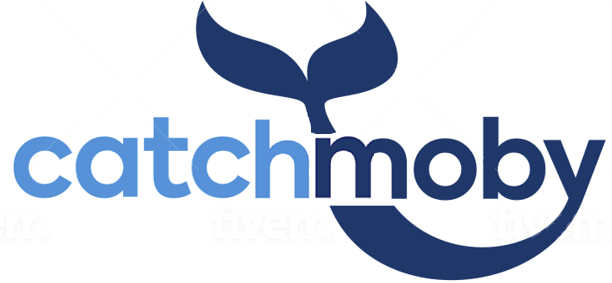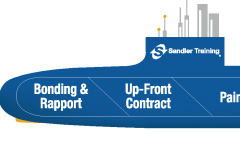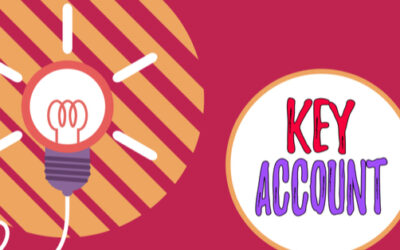Even though I have been in the technology sales field for 30 years I am always looking to learn new things. Is the current economic climate shifting? Are customers increasing or decreasing spend? Is buyer sentiment changing in the B2B space? Are there new selling methodologies?
All of these are debatable except the last one. I can definitively say there are no new innovative selling methodologies. I just received a marketing email (company withheld) touting a new innovative Sales Kickoff Agenda for your sales teams in 2023. It explains how we need to correct course using lessons learned from 2022. It concisely details all of these lessons learned in a neat, easily digestible infographic. As I click on the link waiting with anticipation, I started to make my way down the colored boxes and then disappointment set in. “Find issues that matter, Define customer needs, Find decision makers, Figure out the buying process” – Are these really new and innovative techniques??? I think Mr. Sandler back in 1967 would say NO!
Dale Carnegie started selling his courses for public speaking, persuasion and confidence back in 1912. Then he penned his famous, “How to Win Friends and Influence People” in 1936 with advice such as “Be genuinely interested” and “Smile” and “That person’s name is the sweetest sound”. Following shortly after that, David Sandler created his methodology because he saw several problems with the sales process of his day:
· Wasting time on inappropriate prospects
· Wasting time giving free advice
· Getting a premature no or a slow yes
His solution? You should always be focused on building a relationship, qualifying the opportunity and closing the sale. That is very pithy advice that has stood the test of time. I can see a lot of customers who focus more on their products, don’t build true relationships and stop qualifying after the initial stage only to waste time on a sales cycle that goes nowhere.
Now there have been some attempts at new sales methodologies – all really intent on just creating an acronym so they could be remembered with some combination of budget, authority, needs and decision – there BAND – I just created a new methodology!! Unfortunately they all just rehashed the methodologies of the past. However, a lot of these methodologies, like Challenger, do more damage than good. Challenger, as the name implies, wants you to “disrupt” the customers thinking by, you guessed it, challenging them. The thought was that customers have been googling solutions so long they are almost experts and so you need to come and challenge these preconceptions. In reality I have found that customers are not more educated but more confused with all of the research and information they have access to. That is why Gartner has proposed its next step in sales evolution which is more of a “band aid” than an actual methodology.
That “band aid” is called Sense Making. I know, a terrible name but it is pretty descriptive. Gartner argues that because there is so much information out there for buyers to access, there is no need to provide them with more insights. Instead, you should carefully curate your sales and marketing materials in order to contextualize your product or solution in terms of their business. It’s a little bit like shopping for a dishwasher – there are about 1,000 to choose from – all with different features and functions. Rather than say why your dishwasher is so great, put it into context by explaining where it fits and compares to other dishwashers. I admit this is a useful skill to have on hand, but all of these are just that – skills you need to develop and deploy when the time is right. You don’t see a contractor showing up to build a house with a hammer – he has a full tool belt and power tools and a team to collaborate with.
With all that being said, I would like to propose to you something that is new-ish. I think all the fundamental stages of a sales cycle will always be relevant – budget, need, authority, decision, etc. But what differs is how we execute those stages and more importantly, how we are interacting with the customer. Salespeople will always need to qualify deals and close deals. Customers will always need to understand what a solution does for their business and what the value/ROI is. However, the engagement model changes each year. The model used to rely on lots of face to face visits and handshakes. Now, there is a lot of googling and zoom calls. But not only that, the relationship we need to build with customers has changed.
B2B companies don’t buy products or services, people do. Those people are just like anybody else – they were affected one way or another by COVID, they see how easy it is to buy things from Amazon, they may have been affected by the Great Resignation and remote working and they probably believe there is a SaaS service for just about everything. As a salesperson you need to be sensitive to these shifts in buyer’s attitude. Of course this doesn’t change the need to understand budget or to qualify the opportunity but it does change the nature of your relationship with the customer.
One of the trends we have seen in marketing in recent years that is making its way to sales is personalization. Customers want a truly personalized buying experience. Don’t tell me why your solution is good for my industry or even my company – tell me how your solution benefits ME! As always there have been a flood of AI, analytics and automations out there claiming the can personalize marketing and sales for all of your customers. That reminds me of the late night commercials (ok YouTube commercials now) where the person pitching says that they created an offer just for me. Imaging spending all those advertising dollars to target one person!!
In reality, all those solutions do is create a generalized persona of those likely to buy and plays on preconceived notions of that persona’s buying behavior. I play in a different world. Since I have sold to only a handful of really large accounts my whole career, I could literally personalize all of my customer interactions down to the individual. Unfortunately, I was left to my own device most of the time and so I became researcher, business development, account executive and marketer. Like they say, “Jack of all trades and master of none.”
So what has changed? The focus on Account Based Management has become a hot topic – and for good reason – it has the highest ROI of any marketing or sales spend out there. Look at these amazing statistics:
· 91% of companies using ABM increase their average deal size (SiriusDecisions).
· 171% increase in average annual contract value after implementing Account-based Marketing, according to the ABM Leadership Alliance
· 70% increase in the number of opportunities created via ABM (Gartner).
· 87% of B2B marketers surveyed by ITSMA reported that their ABM initiatives outperform their other marketing investments in terms of ROI
It’s clear that ABM is the wave of the future, until something better comes along. Now more than ever technology companies need to land large, strategic customers. They need these large customers because they provide repeatable revenue with predictable increases as well as innovation, credibility and many other benefits. They help you weather the tough times and provide momentum during the good times to close additional customers. But the way to catch these “whales” also requires a dedicated team from sales and marketing as well as dedicated tools, materials and processes. You simply wont be successful with your existing team closing opportunistic customers now focusing some of their time on landing larger, named accounts. It requires a different mindset, a different engagement model and results in a different account cadence that most reps are not used to.
Either way you slice it, if you followed Carnegie and Sanders you would have the tools needed to sell today. Sandler thought that you needed to be on the same team as your customer, not to challenge them. He also believed that building a relationship on questions and honest discussion was paramount. He thought being a trusted authority (what we call trusted advisor today) was critical in forming that relationship. David Sandler was well ahead of his time and the Account Based Management approach follows several of his guidelines. But we can do without the submarine!






0 Comments